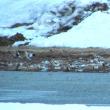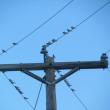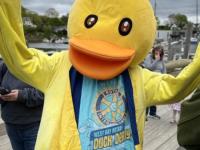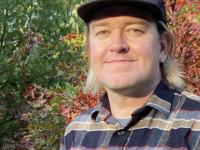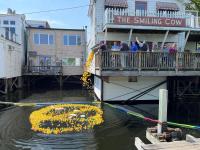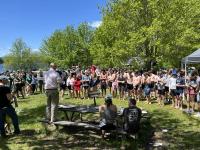Who to Follow?
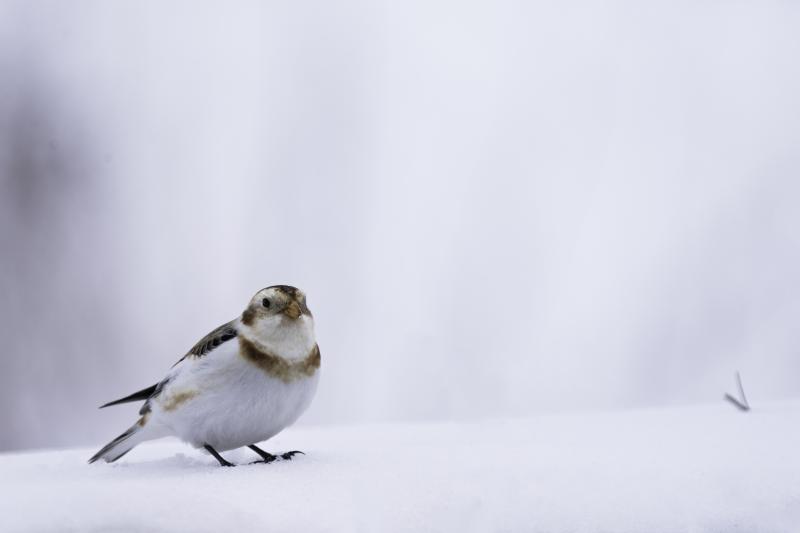 Snow buntings are often seen in and near snow, where their plumage makes them hard for predators to see. Photo by Lorie Shaull courtesy of Wikipedia Commons
Snow buntings are often seen in and near snow, where their plumage makes them hard for predators to see. Photo by Lorie Shaull courtesy of Wikipedia Commons
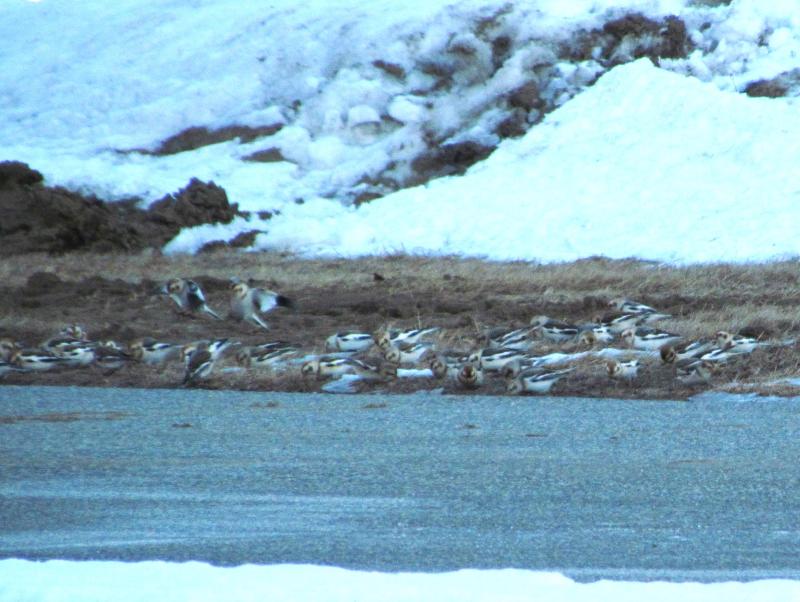 Part of the flock of snow buntings that the authors found feeding in an open patch beside a parking lot at the Brunswick Executive Airport in February. Courtesy of Jeff Wells
Part of the flock of snow buntings that the authors found feeding in an open patch beside a parking lot at the Brunswick Executive Airport in February. Courtesy of Jeff Wells
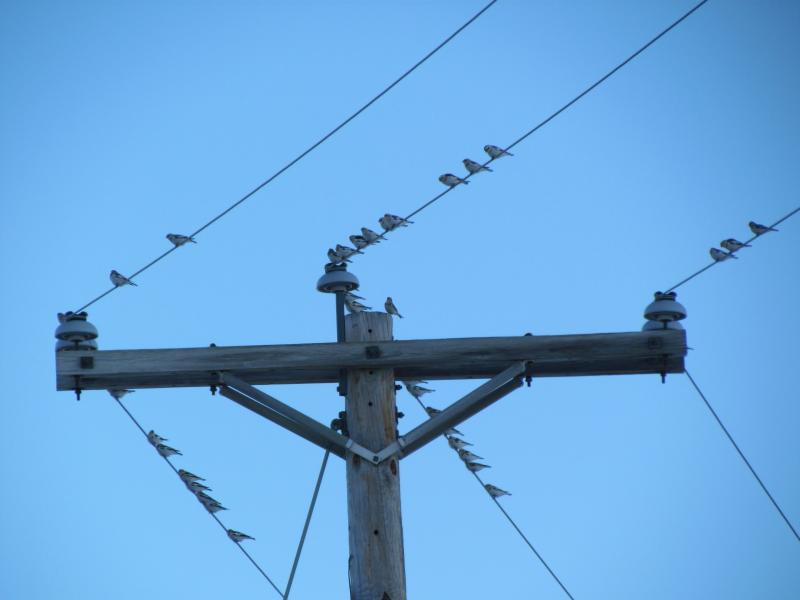 Proof that ground-loving snow buntings will sometimes perch well above ground, including on telephone wires, perhaps led by a rogue leader. Courtesy of Allison Wells
Proof that ground-loving snow buntings will sometimes perch well above ground, including on telephone wires, perhaps led by a rogue leader. Courtesy of Allison Wells
 Snow buntings are often seen in and near snow, where their plumage makes them hard for predators to see. Photo by Lorie Shaull courtesy of Wikipedia Commons
Snow buntings are often seen in and near snow, where their plumage makes them hard for predators to see. Photo by Lorie Shaull courtesy of Wikipedia Commons
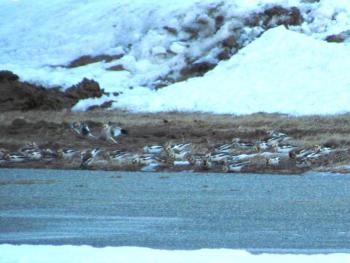 Part of the flock of snow buntings that the authors found feeding in an open patch beside a parking lot at the Brunswick Executive Airport in February. Courtesy of Jeff Wells
Part of the flock of snow buntings that the authors found feeding in an open patch beside a parking lot at the Brunswick Executive Airport in February. Courtesy of Jeff Wells
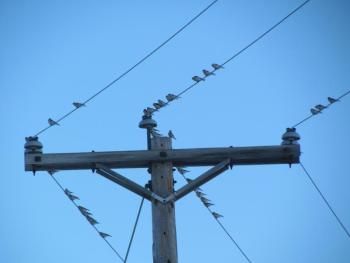 Proof that ground-loving snow buntings will sometimes perch well above ground, including on telephone wires, perhaps led by a rogue leader. Courtesy of Allison Wells
Proof that ground-loving snow buntings will sometimes perch well above ground, including on telephone wires, perhaps led by a rogue leader. Courtesy of Allison Wells
Deciding on which leader to follow is certainly occupying much of the media airspace for us humans in the U.S. at the moment and will be for months to come until the Presidential election.
From the time we are young we grapple with the question of whether we should do what we see others do, follow our own inner compass, or heed the guidance of our parents.
Animals that occur regularly in groups, including birds, often have to make decisions about who to follow. Who and when to follow can have life or death consequences for them on a daily basis.
We were reminded of these questions a few days ago when we stopped by the Brunswick Executive Airport to look for birds after a stop at a favorite local bakery nearby. We were surprised to see an early turkey vulture migrant (or perhaps one of the increasing numbers of overwintering birds). That bird was soaring along by itself, but as we started to drive away, we were pleasantly surprised to find a flock of snow buntings flashing their startling white wing patches as they swirled down onto the edge of a parking lot.
On the ground, the birds were in constant movement, picking at the grasses for seeds with their stubby bills, the birds at the back of the line hopping up to the front edge and quickly being hopscotched over by the next ones in the rear. Then suddenly, a bird would fly up and the entire flock would follow, scaling up a hundred feet into the blue sky, calling as the flock swirled and tumbled, flashing bright white, then a dimmer brownish and then white again. After a few seconds, one bird, then another, and then finally the entire flock (we counted 82 at one point) would drop back to the ground and begin the process all over again.
One seemingly rogue leader added in a twist for these famously ground-loving birds.
After another swirling flight into the air, the birds descended toward the ground as usual but then one veered away instead and landed on a telephone wire. What did the rest of the flock do? They followed, landing on the wires like the first bird, some 20 feet or so above the ground.
It wasn’t long before one dropped from the perch back to the parking lot. Most (but not all) of the flock followed and began the frantic feeding process again.
All of this made us wonder how these, and other birds, make decisions about who and when to follow. Is it based solely on who is the most nervous and jumpy? Those who don’t follow the leader could end up alone and solitary, a prime target for an attacking predator. Are the first ones to fly up the youngest, least experienced birds or the oldest and wisest ones? How about the decision to go back to the ground after flying up? Is that just the bird that is hungriest? Youngest/least experienced? Oldest? Strongest? Weakest? Or something else entirely?
Where are the bird pollsters when you need them to figure out how they “vote” for their leaders!
Jeffrey V. Wells, Ph.D., is a Fellow of the Cornell Lab of Ornithology and Vice President of Boreal Conservation for National Audubon. Dr. Wells is one of the nation's leading bird experts and conservation biologists. He is a coauthor of the seminal “Birds of Maine” book and author of the “Birder’s Conservation Handbook.” His grandfather, the late John Chase, was a columnist for the Boothbay Register for many years. Allison Childs Wells, formerly of the Cornell Lab of Ornithology, is a senior director at the Natural Resources Council of Maine, a nonprofit membership organization working statewide to protect the nature of Maine. Both are widely published natural history writers and are the authors of the popular books, “Maine’s Favorite Birds” (Tilbury House) and “Birds of Aruba, Bonaire, and Curaçao: A Site and Field Guide,” (Cornell University Press).





